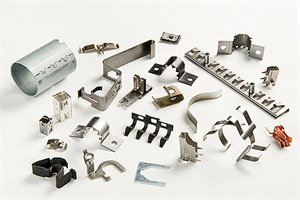For Precision Stamping Parts, blackening treatment is a common surface treatment technique used to improve the corrosion resistance, increase wear resistance, and give specific appearance colors to the parts. Blackening treatment is usually achieved by forming a dense oxide film on the metal surface through chemical reactions.
The following are the general steps for blackening treatment of precision stamped parts:
Cleaning: Firstly, it is necessary to thoroughly clean the surface of Precision Stamping Parts to remove oil, dust, rust, and other impurities. Cleaning can be done using alkaline cleaning agents, solvents, or high-pressure water flow methods.
Degreasing: If there is oil stains on the surface of Precision Stamping Parts, degreasing treatment is required. This can usually be achieved by using organic solvents or alkaline degreasers.
Pickling: Pickling can further remove oxides and impurities on the surface of Precision Stamping Parts, and improve the activation energy of the metal surface, which is conducive to the formation of oxide films. Acid washing usually uses dilute sulfuric acid, dilute hydrochloric acid, etc.
Blackening treatment: This is a crucial step, and the specific method depends on the blackening agent and treatment process used. Common methods for blackening include alkaline oxidation (blue treatment) and acidic oxidation. In these methods, metal parts are immersed in a solution containing oxidants, forming a dense oxide film on the metal surface through chemical reactions, resulting in a black or dark blue surface of the parts.
Cleaning and drying: After blackening treatment, Precision Stamping Parts need to be removed from the blackening agent and thoroughly cleaned to remove surface residues. Then, dry the parts to prevent damage to the oxide film during subsequent processing.
Subsequent treatment (optional): As needed, the blackened parts can be subjected to subsequent treatment, such as oiling, painting, or packaging, to further improve their corrosion resistance, wear resistance, or decorative properties.
It should be noted that the effectiveness of blackening treatment is influenced by various factors, including the type of metal material, surface condition, formulation and concentration of blackening agent, treatment temperature and time, etc. Therefore, when conducting blackening treatment, it is necessary to strictly control the process parameters to ensure the stability and reliability of the treatment effect.
The blackening treatment of Precision Stamping Parts is an effective surface treatment technique that can improve the corrosion resistance, increase wear resistance, and give specific appearance colors to the parts. When conducting blackening treatment, it is necessary to strictly control the process parameters and operating procedures to ensure the stability and reliability of the treatment effect.
